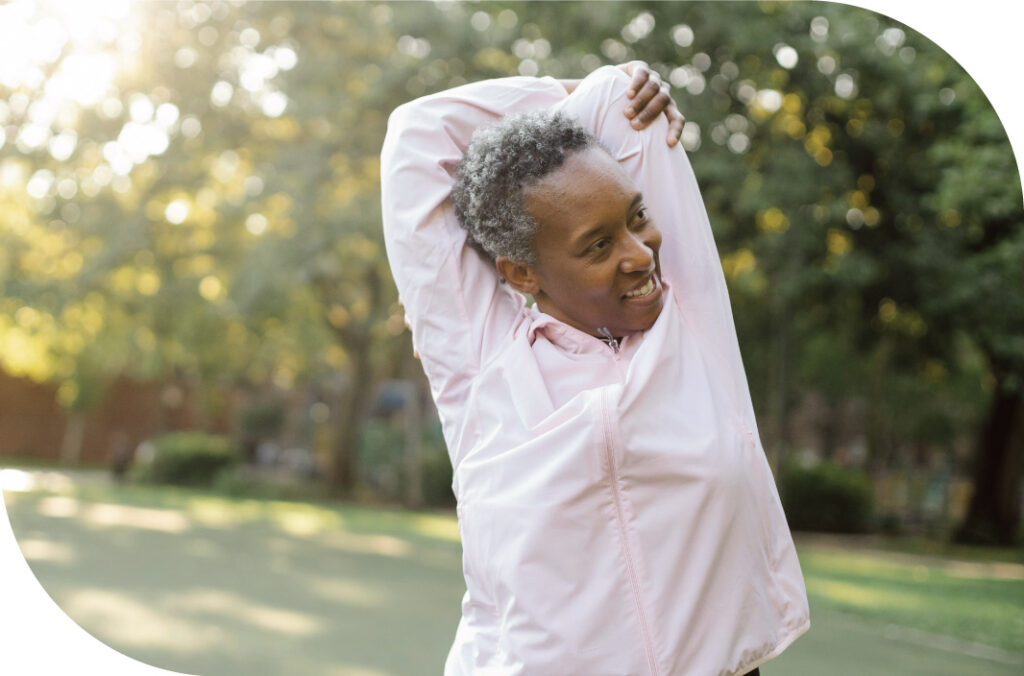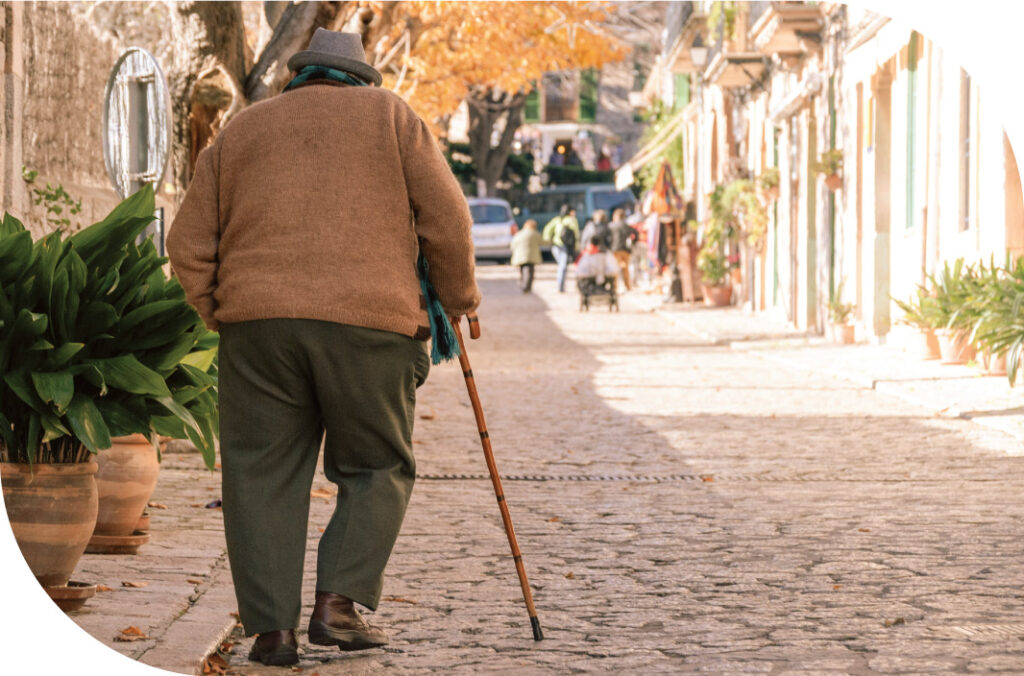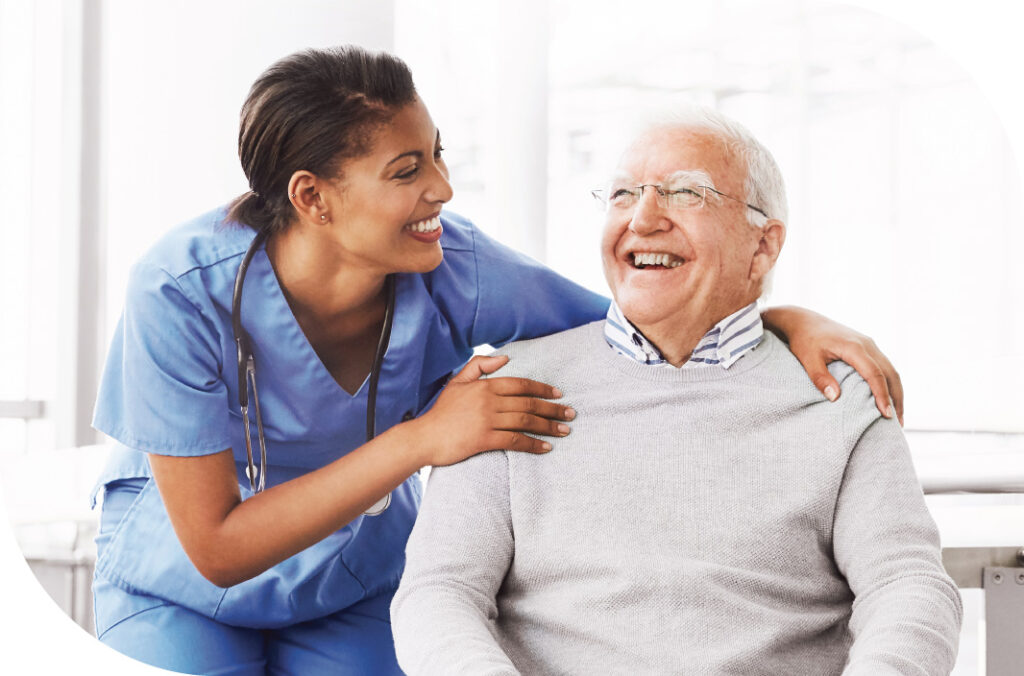“An ounce of prevention is worth a pound of cure” – Benjamin Franklin.
A fall for seniors is an unintentional event where they lose their balance and land on the ground or a lower surface. This can often result in injury or other adverse outcomes. This can lead to fatal and non-fatal injuries across all age groups, especially seniors and children.
Experiencing slips and falls is a natural part of being human, but understanding the key causes of falling is paramount. For older adults, these factors include imbalance, dizziness, visual or hearing impairment, arthritis, stroke, postural hypotension, foot pain, and cataracts. Before diving into the topic of falls among seniors and ways to prevent them, let’s first explore the underlying concepts and factors contributing to this issue.
Falling in Seniors
As people age, their bodies undergo several changes that make them more susceptible to diseases, accidents, and falls.
According to the WHO, falls are the second-leading cause of unintended injury deaths worldwide after road-fated accidents. Some of the injuries that senior citizens can sustain as a result of a fall include head injuries, fractures, lacerations, hematomas, and joint dislocations.
Nevertheless, implementing certain safety measures and proactive actions can significantly mitigate or eliminate potential fall risk, especially in the home. When implemented and adhered to, they can reduce the possibility of an older adult becoming a victim of a fall, thus sparing them from what can sometimes be a long and arduous healing journey.
Here are nine fundamental tips that, when applied, prevent older adults from falling and sustaining injuries.
1. Home Evaluation and Modification
There’s nothing that compares to the comfort of your own home. Many people prefer to remain in their homes as they age, where familiarity, love, and memories reside.
Home evaluation and modification means observing, assessing, and tailoring a home to eliminate obstacles for better and safer living conditions.
With older adults whose bodies have undergone changes that make them more susceptible to injuries and incidents, it is essential to protect their home in order to avoid injury or harm.
First, it is important to consider the individual’s needs. This may involve installing enhanced lighting in areas where it’s needed or removing any form of clutter in order create a safer environment. Introducing supports like handrails, grab bars, and anti-slip strips where necessary can further enhance safety and mobility within the home. Take note that these measures should always be tailored to the specific needs of the patient to ensure their comfort and well-being.
2. Regular Exercise

It’s crucial to understand that falls can have serious consequences for the physical health of senior citizens. This is due to the changes their bodies undergo as they age.
As one gets older, the body system becomes weaker, making it vulnerable to issues like lack of muscle strength, arthritis, vision problems, Parkinson’s disease, and even dementia. So, while regular exercises focusing on muscle strength and balance may not completely prevent falls, they can significantly reduce the risks by enhancing strength, fitness, agility, and stamina.
Exercises like the examples below can help improve coordination:
- Walking heel to toe
- Standing on one leg
- Tai Chi
- Yoga poses and stretches,
- Work on strength, balance, stamina, and flexibility.
With these types of exercises, the rate of falls can be reduced by 23%.
3. Medication Management
Older adults are often among the most frequent users of medications, reflecting the changes in their aging bodies, such as increased body fat and decreased renal and hepatic functions.
In some cases, patients can react differently to these medications. These reactions or side effects can lead to a high chance of falling and the sustainment of injuries, fractions, and an overall reduced quality of life.
Some of these side effects may include double vision, nausea, confusion, high blood pressure, dizziness, weakness, delirium, motor incoordination, and hypotension.
It’s crucial to remember that before administering any medication to the patient, check the information regarding potential side effects on the packaging or online. Ensure that every medication the patient takes, especially over-the-counter medications, is reviewed by a healthcare professional to ensure that it doesn’t have adverse effects on the patient.
Moreover, healthcare professionals should monitor older adults during the medication period to promptly identify any side effects, enabling doctors to provide immediate attention if needed.
4. Vision and Hearing Checks

As one ages, both the eyes and ears undergo changes. The vision of older adults tends to blur and lose its accuracy over time, particularly in low-contrast circumstances. The eyes’ ability to quickly adjust to lighting levels can also slow with age. This makes it difficult for senior patients to perceive their surroundings when transitioning from outside to inside their home on a sunny day. Efficiently maintaining and controlling lighting levels in the home is essential to minimizing the possibility of falls among seniors.
Another way to prevent falls is by conducting regular eye tests on senior citizens to diagnose conditions such as macular degeneration, cataracts, and glaucoma. Possible treatments can help seniors lead a better quality of life.
Additionally, patients should have annual hearing checks and undergo treatment if signs of hearing loss are detected. Signs of hearing loss include difficulty understanding speech, frequently asking others to repeat themselves, turning up the volume on electronic devices, withdrawal from social situations, and difficulty hearing high-pitched sounds.
Rest assured, there are corrective measures, such as prescribed glasses and hearing aids. To ensure that the devices are functioning at their best, it’s important to maintain the equipment through regular cleanings.
5. Footwear
Footwear vastly reduces the risk of falling. Make it a priority to find shoes with firm, slip-resistant soles and arch support that focus on balance and joint strength. Good shoes can alter somatosensory feedback to the ankle and foot, as well as increase sole friction.
Lack of proper footwear can lead to problems such as plantar fasciitis, Achilles tendonitis, bunions, fractures, and hammer toe. Footwear with heels, inadequate straps, and smooth soles should be avoided to prevent risk of falling. To further prevent the risk of falling, seniors should not walk barefoot or with socks inside the home. They should also avoid wear high-heeled shoes inside or outside.
Over 36 million older adults fall yearly, so proper cautionary regulations should be implemented and prioritized to avoid slips and falls.
Foot pain and diseases such as arthritis, gout, Raynaud’s disease, diabetes, and Freiberg’s disease can cause discomfort and difficulty in walking. Proper health check-ups should be conducted regularly to ensure that there are no underlying painful diseases.
6. Assistive Devices

Assistive devices make life easier for older adults. Since the needs of every individual adult differ, a physical or occupational therapist should examine the patient to determine the best assistive device suited for the senior citizen. The table below explains in detail the different types of assistive devices:
| Types | Description | |
| 1 | Canes | Canes come in different forms. Some have grips that perfectly fit the hands, while others have foam grips. |
| 2 | Walkers | Walkers differ from canes as they utilize wheels to ensure balance and stability. They offer the flexibility to add accessories such as baskets, pouches, trays, and even seats for more convenient usage. Walkers come in two- or four-wheel configurations, and some feature common tips that cannot roll. It’s essential to choose the best fit for the older adult’s needs and preferences. |
| 3 | Reachers | The reacher helps older adults reach for something without climbing up on a platform. It can be used to pick something up off of the ground. |
7. Fall Detection Technology
It is wise to invest in adequate technology that alerts caregivers, enabling senior patients to feel safe in their own home. Digital devices have come a long way and are able to detect falls, allowing seniors to age in place with peace of mind.
These wearable monitoring and alarm systems can deter, detect, and warn caregivers of falls. Some devices even provide reactive assistance, limiting the complications that could occur if the older adult were to remain on the floor for an extended period before receiving assistance.
These detection technologies are built with sensors that collect data on the various psychological states of the older adult, such as respiratory and heart rate, temperature, blood pressure, and glycemia. They can also collect data on movements (magnetometers), geolocation, video, and audio measurements of the patient.
With this data, the patient’s overall health and well being can be monitored, making it easy to provide immediate assistance to a loved one.
These devices have been designed to be worn seamlessly, minimizing hindrance and maximizing comfort for the user. Some detecting sensors can be worn as subtly as a pendant, a camera attached to clothes, or a watch. Others can be applied in the home environment, picking up sounds and visuals with supporting cameras and microphones.
8. Stay Hydrated and Nourished
Water plays a crucial part for overall well being and functions, such as the pumping of the heart and the lubrication of joints.
The dangers of dehydration can occur when insufficient fluids are in an individual’s body system, leading to health challenges like blood clot complications, heat stroke, kidney failure, and urinary tract infections. Common signs of dehydration to watch out for include irritability, dry mouth, dark urine, dizziness, weakness, and muscle cramps.
It’s easier for senior adults and loved ones to become dehydrated quickly because their sense of thirst and appetite diminish with age. They also undergo changes in their body composition, resulting in a lack of fluids.
Symptoms of dehydration, like dizziness and tiredness, can cause an older adult to fall and sustain injuries, so water and healthy foods (including foods that contain Vitamin D if a deficiency is present) should be consumed throughout the day.
A doctor should review the medical history of the older adult to determine the right amount of water to take daily, though it’s a good rule of thumb to hydrate with 50-75 ounces of water. Other ways to stay hydrated outside of drinking water include reducing alcohol intake and eating foods with high water content such as cucumbers, lettuce, strawberries, and watermelon.
9. Regular Check-Ins and Support

It’s important to recognize that everyone requires some level of care and support. Falls can occur unexpectedly at any time. It’s essential to regularly assess and modify the home environment to mitigate risks and ensure safety. Creating a safe home for a loved one can indeed be time-consuming and challenging, often necessitating a collaborative team effort.

This is why Caregivers play a crucial role in patient care. They’re able to ensure that the older adult’s home environment is free from fall hazards and poor lighting levels with applied assistive devices like handrails, handles, and grab bars. Caregivers can also lend a listening ear or a helping hand when going for check-ins. This can help the senior feel seen, heard, relaxed, supported, and cared for.
Regular checkups are conducted to ensure that older adults exercise regularly, take medications judiciously, eat healthy, wear proper footwear, and drink adequate water. Caregivers can also inform family members and friends about the necessary care to ensure the safety of their loved ones. This makes it important to provide contact information for family members and friend in case of emergency or for needed emotional support.
Conclusion
In conclusion, falls among senior adults stem from various small-risk factors that accumulate over time, but these risks can be significantly reduced with proactive measures. Despite the inherent fear of falling leading to inactivity, caregivers can empower older adults with a sense of safety and independence by implementing nine key strategies addressing fall hazards, health issues, and home safety. Technological advancements such as fall detection sensory alarms further enhance safety measures by tracking and analyzing movements and health conditions to prevent or assist in fall incidents.
Ultimately, patient care is a collaborative effort involving various people close to seniors, including family, friends, and healthcare professionals. By embracing these nine fall prevention tips, we not only safeguard seniors’ well-being but also foster a supportive network that promotes their continued independence and safety. Together, we can make a meaningful difference in the lives of our senior loved ones, inspiring further exploration into the comprehensive care provided by our home care business.